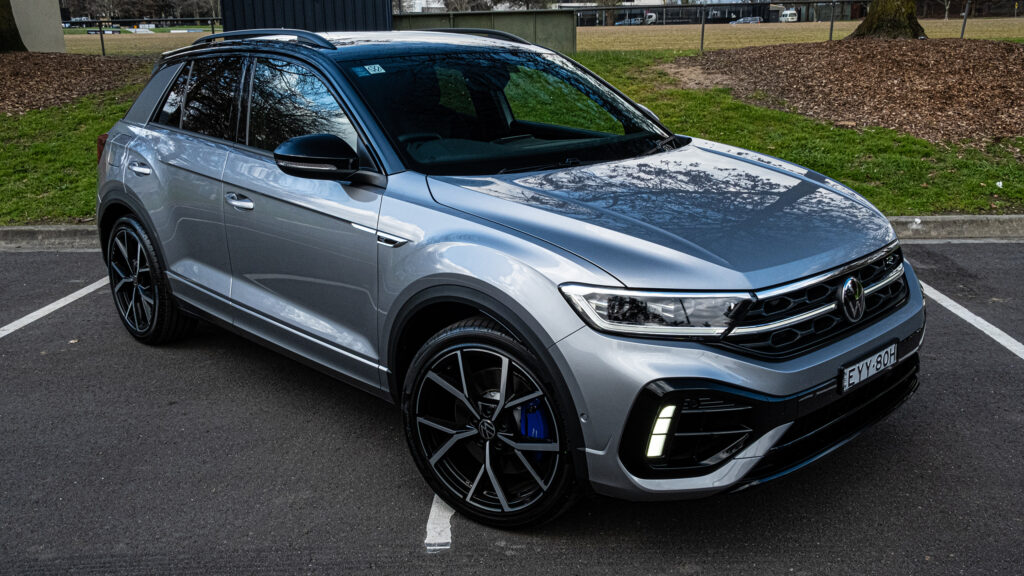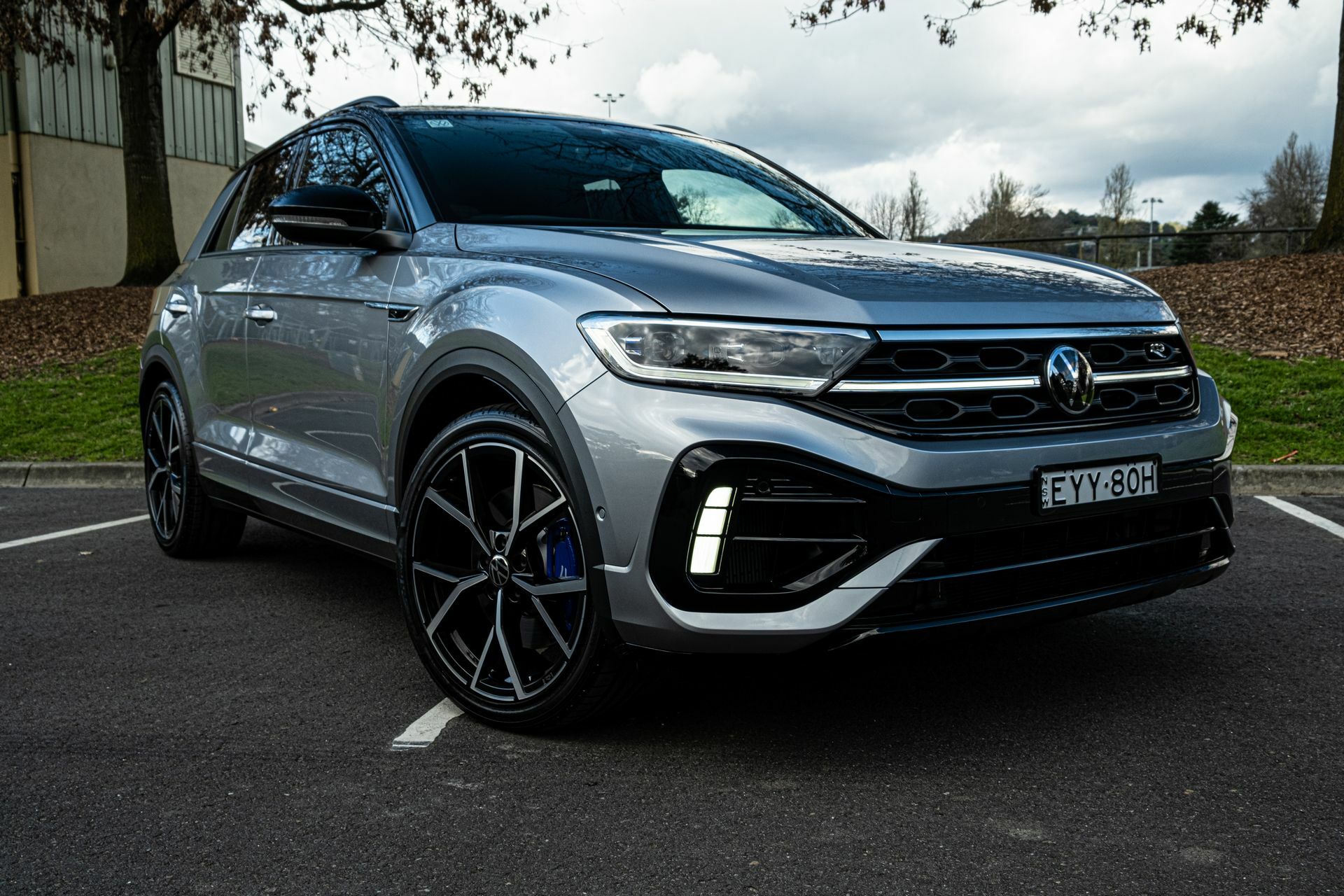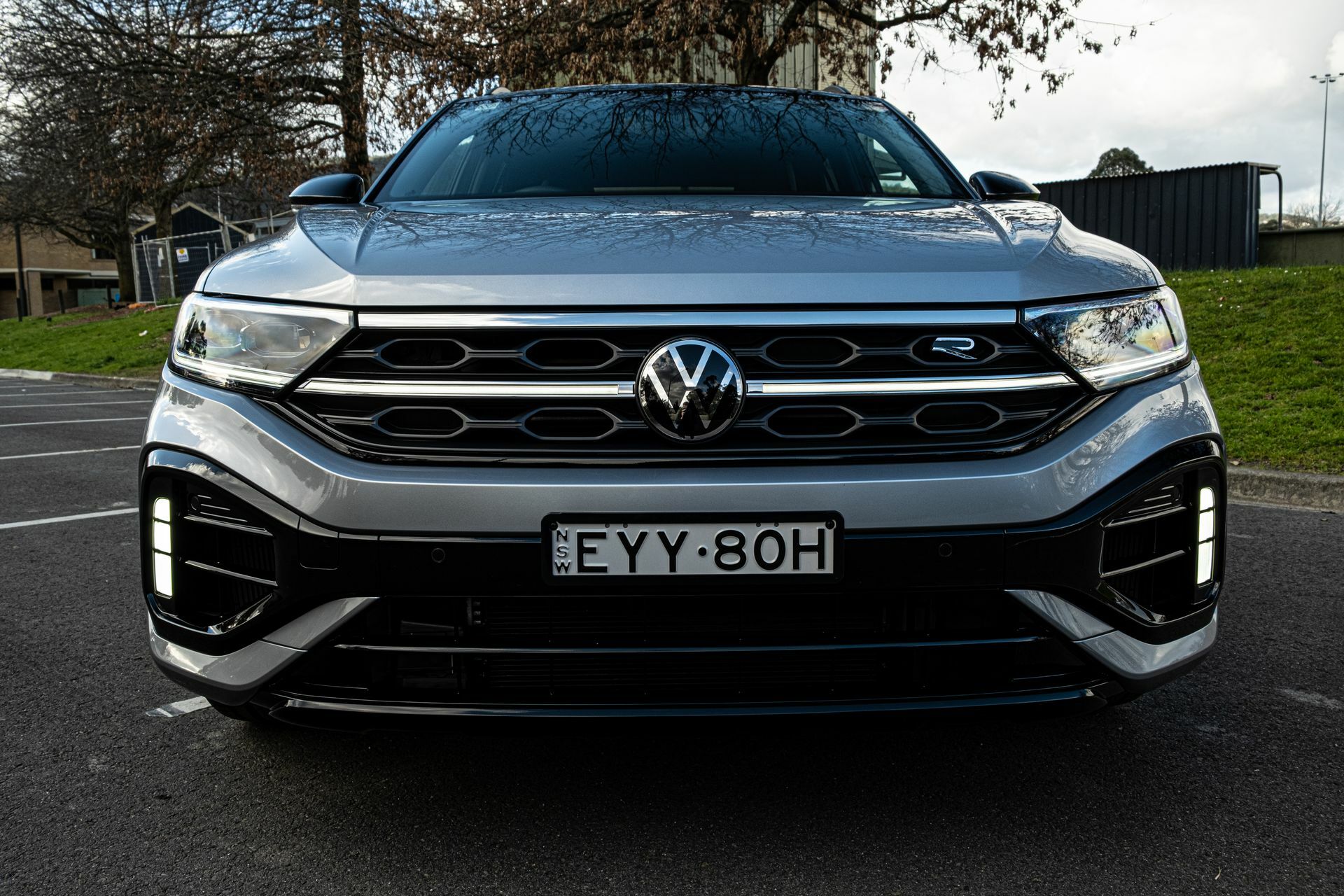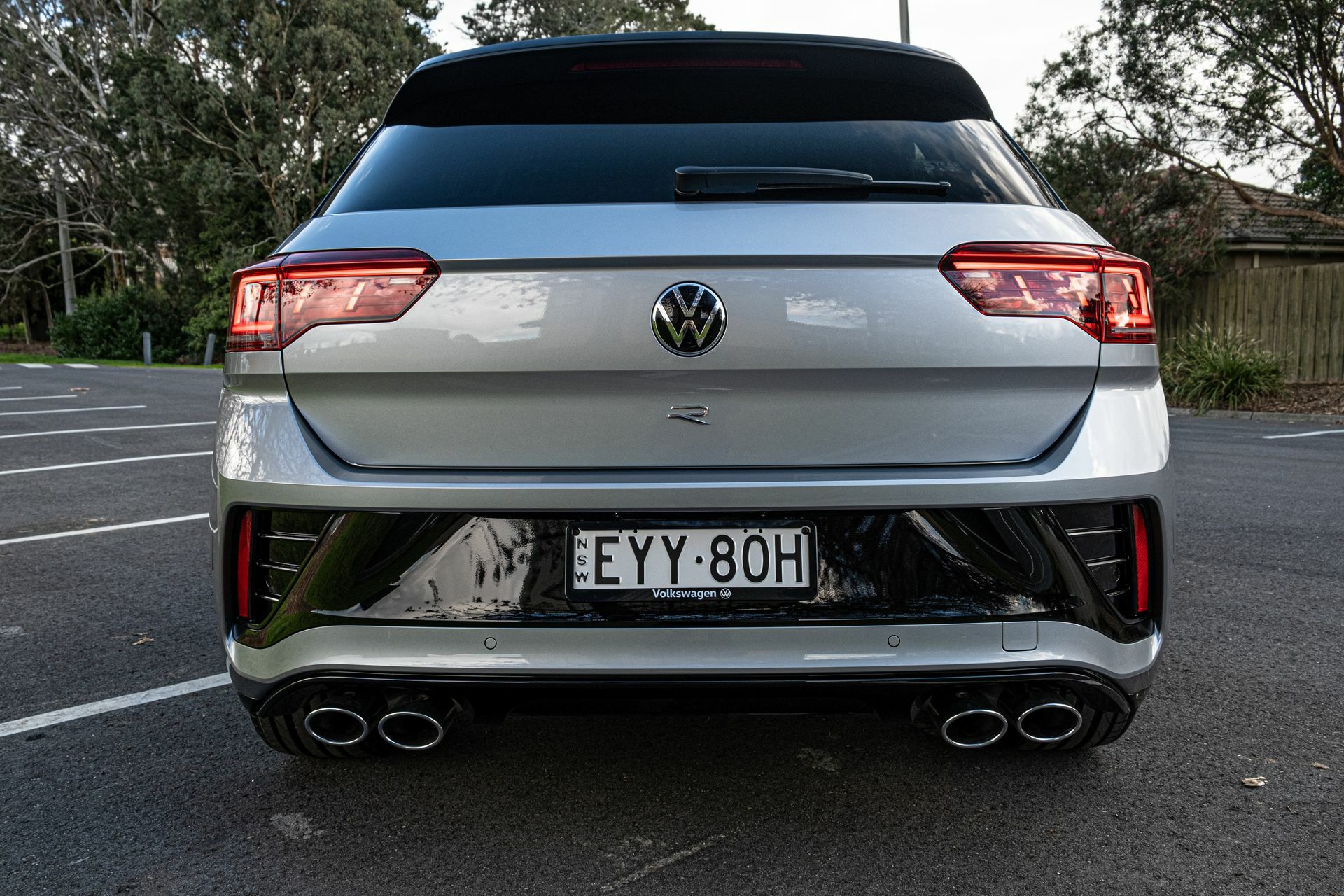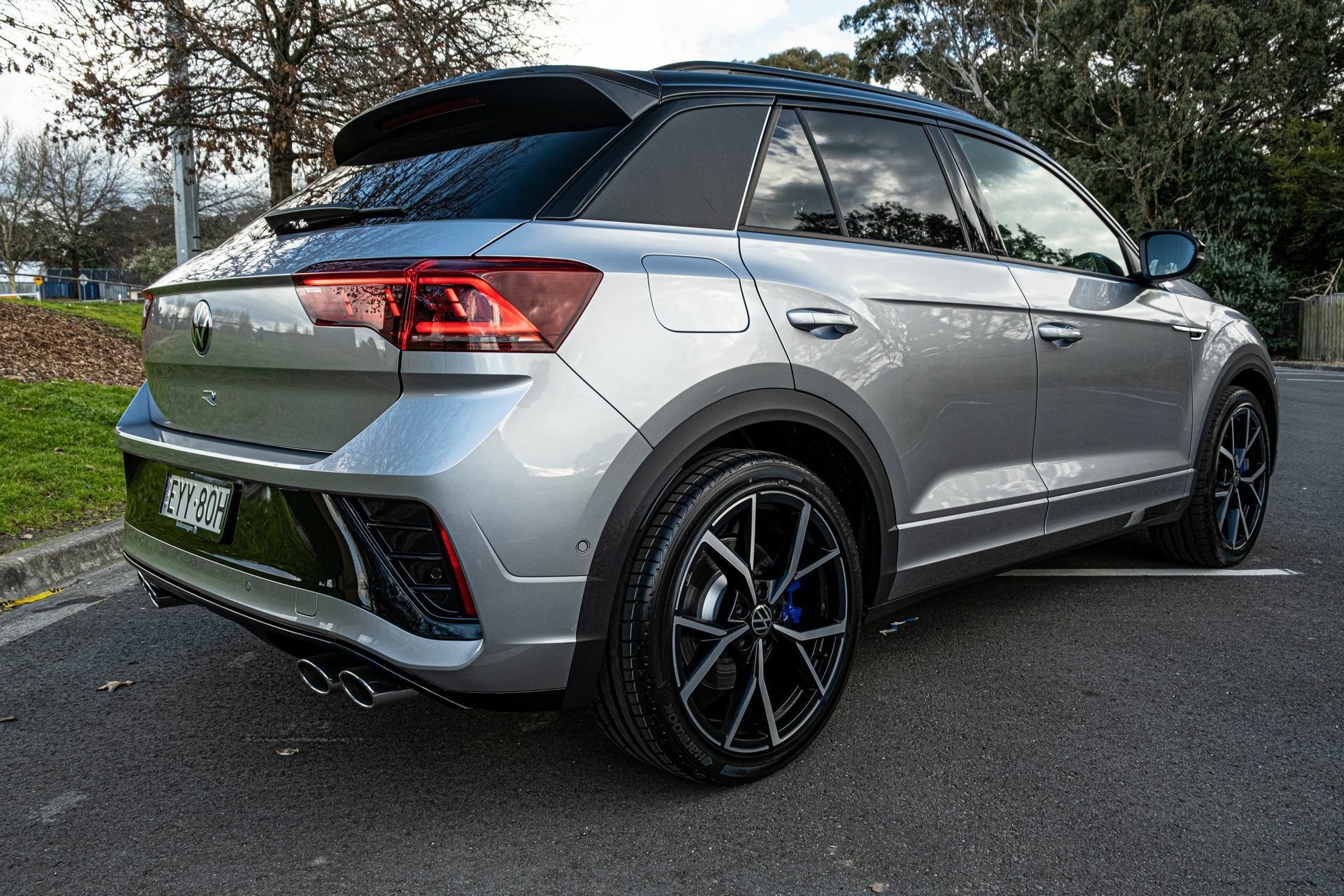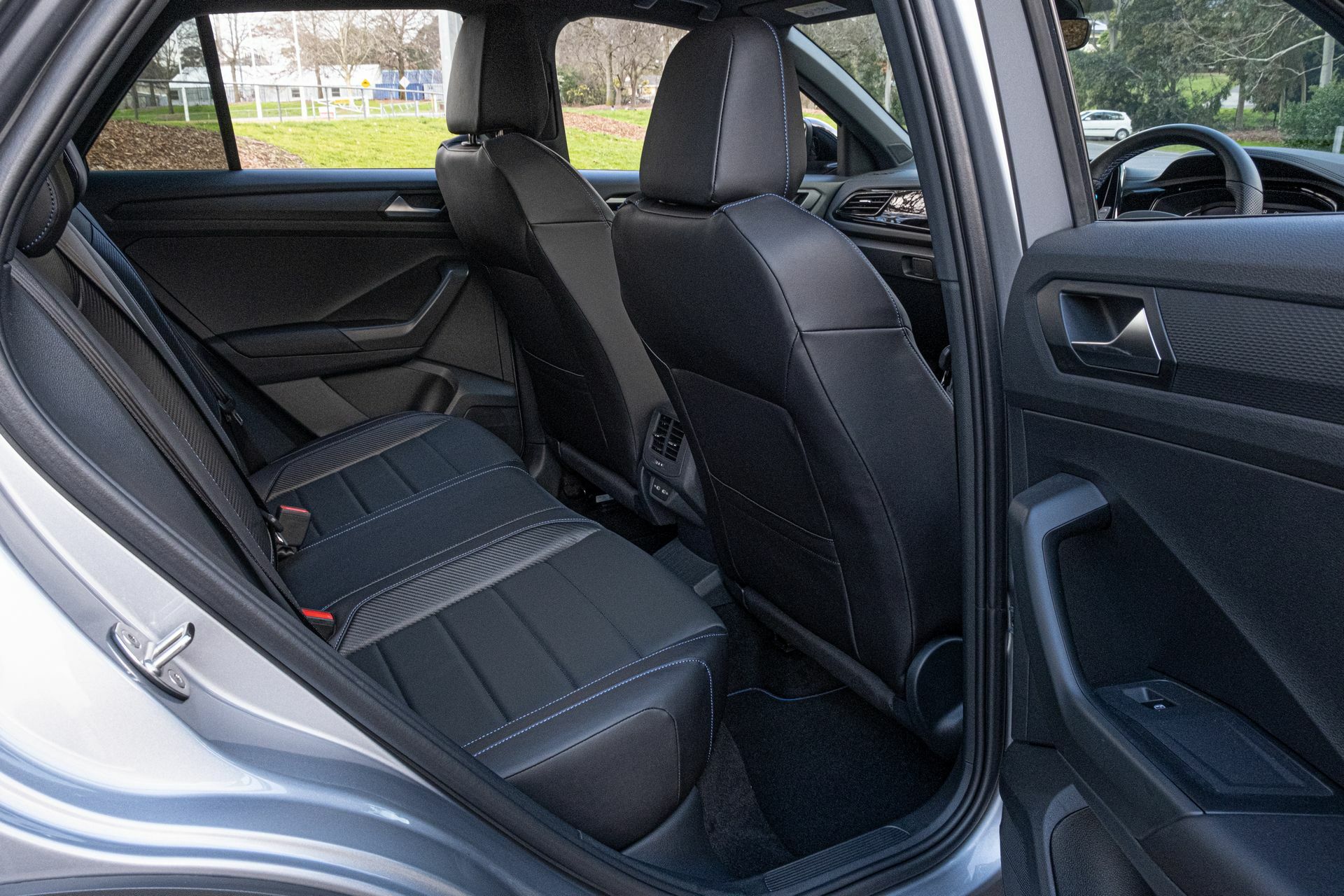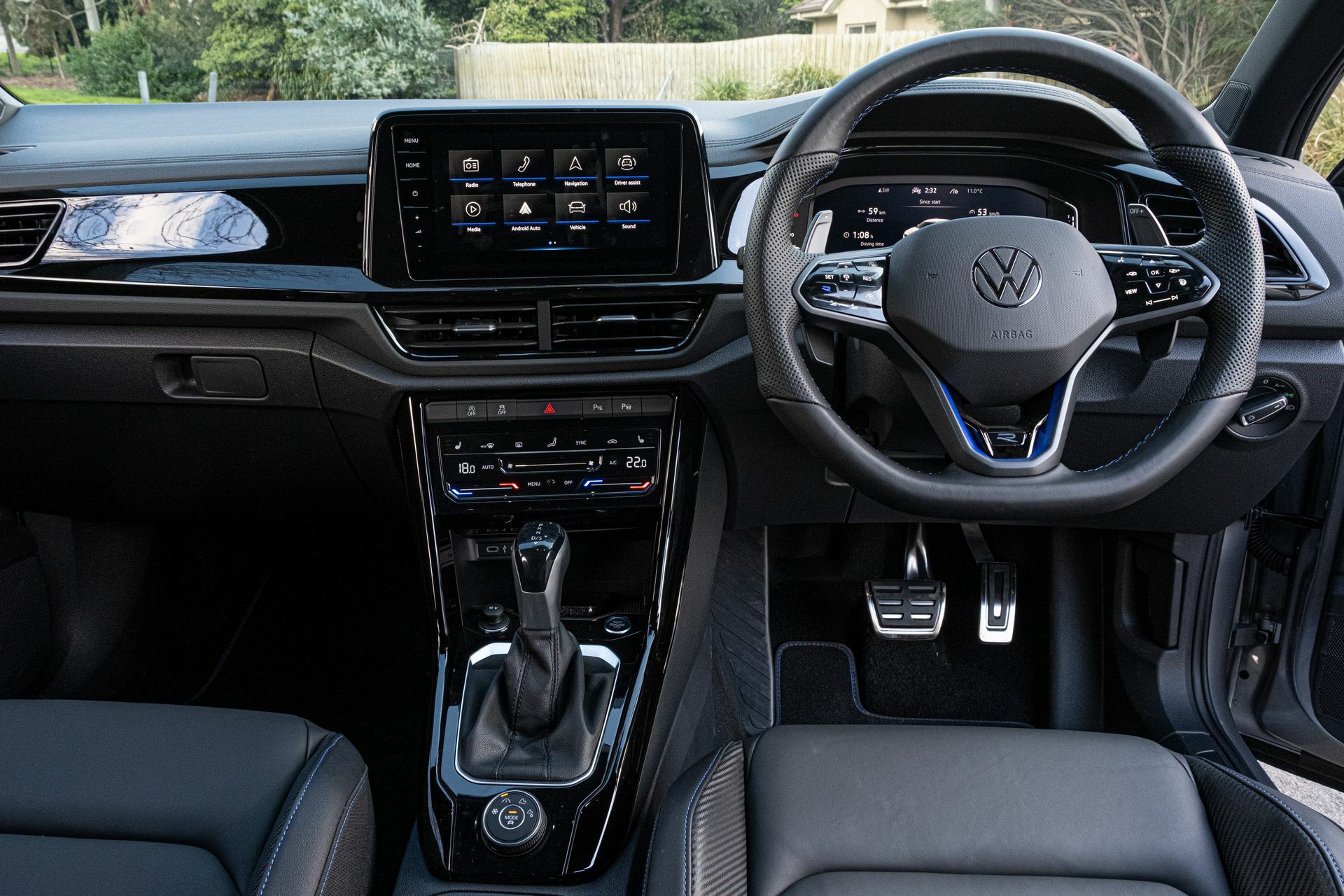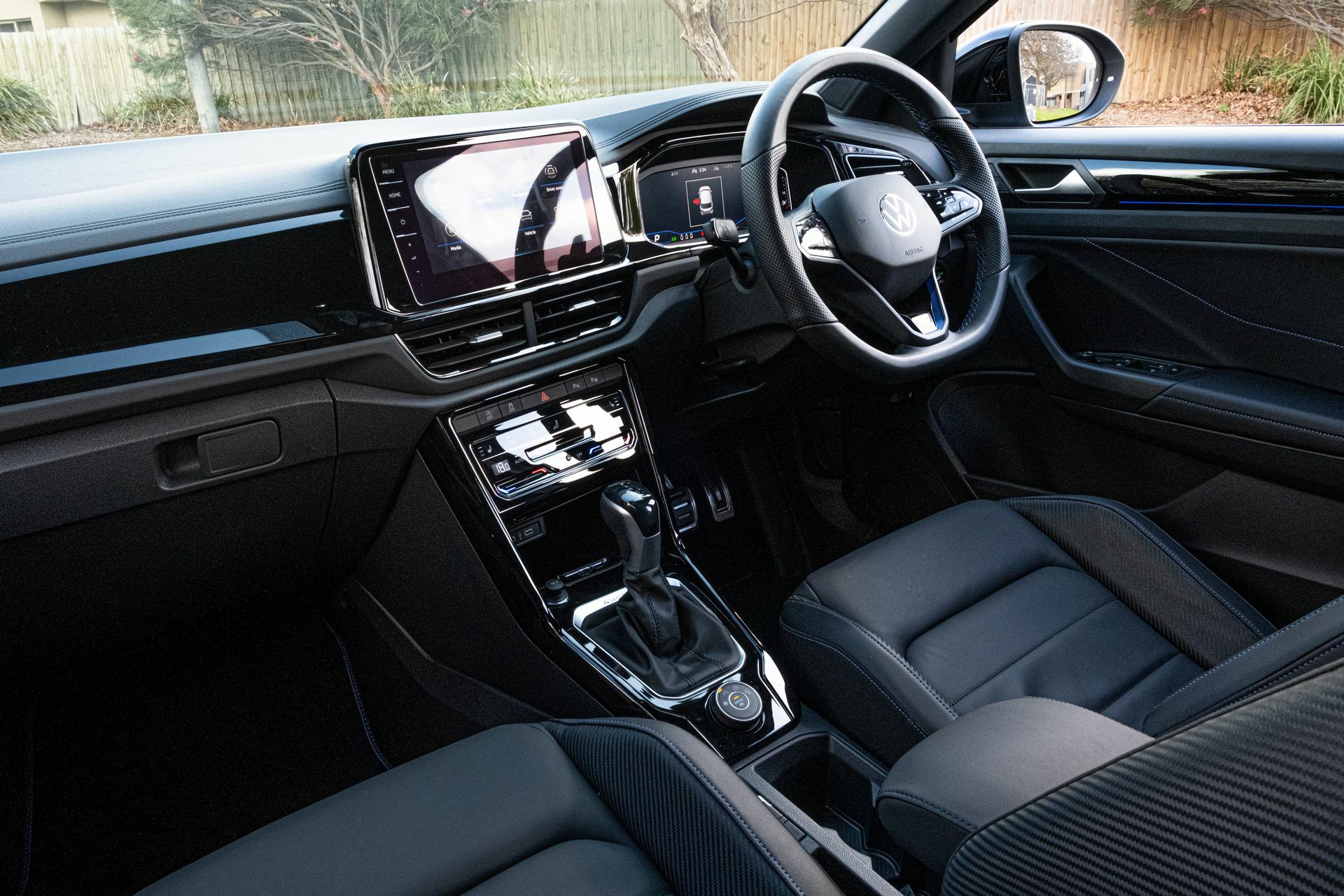In many countries outside the U.S., the market for performance-focused small SUVs is getting increasingly exciting. Competitors such as the Hyundai Kona N, Cupra Formentor VZx, as well as models from Mercedes-Benz and BMW, are all vying for attention, constantly trying to one-up each other. Among these contenders, the VW T-Roc R is one of the most compelling.
VW has been building the T-Roc since 2017 as the perfect middle ground between the Tiguan and the teeny-tiny T-Cross. The R variant arrived a couple of years later and touched down on Australian shores last year. It is competitively priced, looks quite striking, offers solid performance and proves that the German marque is still very adept at making performance cars with plenty of appeal.
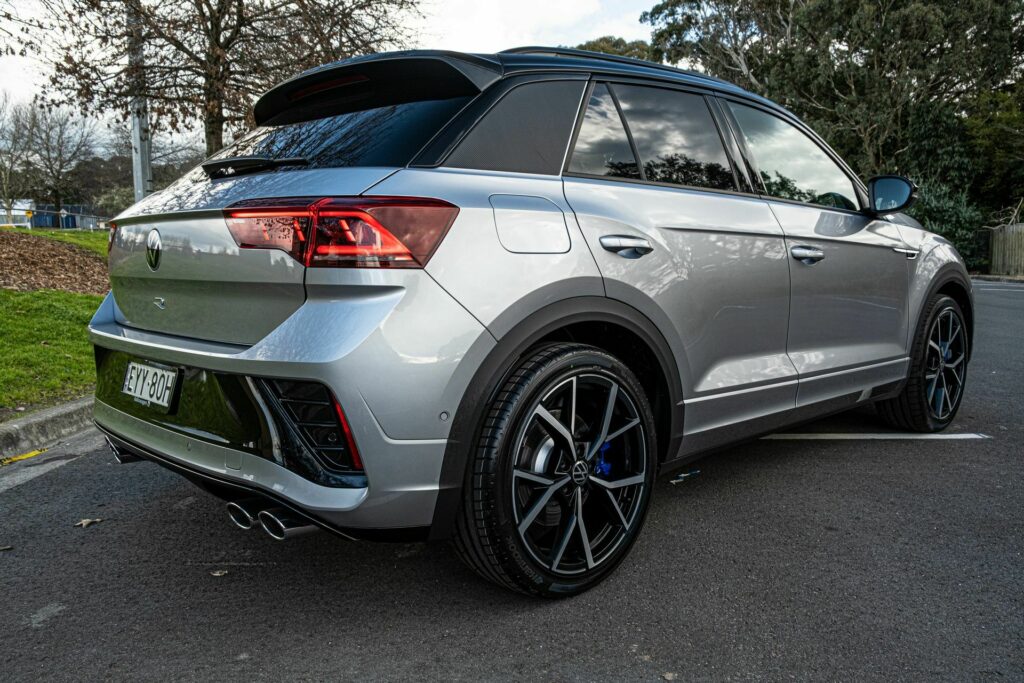
One of the key talking points about the T-Roc R is its price. The entry-level T-Roc R Grid Edition starts at a competitive AU$54,300 ($34,865) while the flagship T-Roc that we recently drove is available from AU$59,300 ($38,075). This does make it pricier than the outgoing Hyundai Kona N which starts at AU$49,200 ($31,590) and tops out at AU$52,200 ($33,517) but it is well-matched with the Cupra Formentor VZx which starts at AU$61,990 ($39,803). Perhaps of even more interest is the fact that the T-Roc R significantly undercuts the smaller Golf R, which is priced from AU$65,990 ($42,371) in hatchback guise.
So, what do you get for your money?
For starters, there is VW’s familiar 2.0-liter turbocharged four-cylinder under the hood. While this engine delivers 235 kW (315 hp) and 400 Nm (295 lb-ft) of torque in the Golf R Mk8 Hatch, it is capped at 221 kW (296 hp) and 400 Nm (295 lb-ft) in T-Roc R guise. Mated up to this engine is a seven-speed DSG transmission that transmits power to the pavement through a 4MOTION all-wheel drive system.
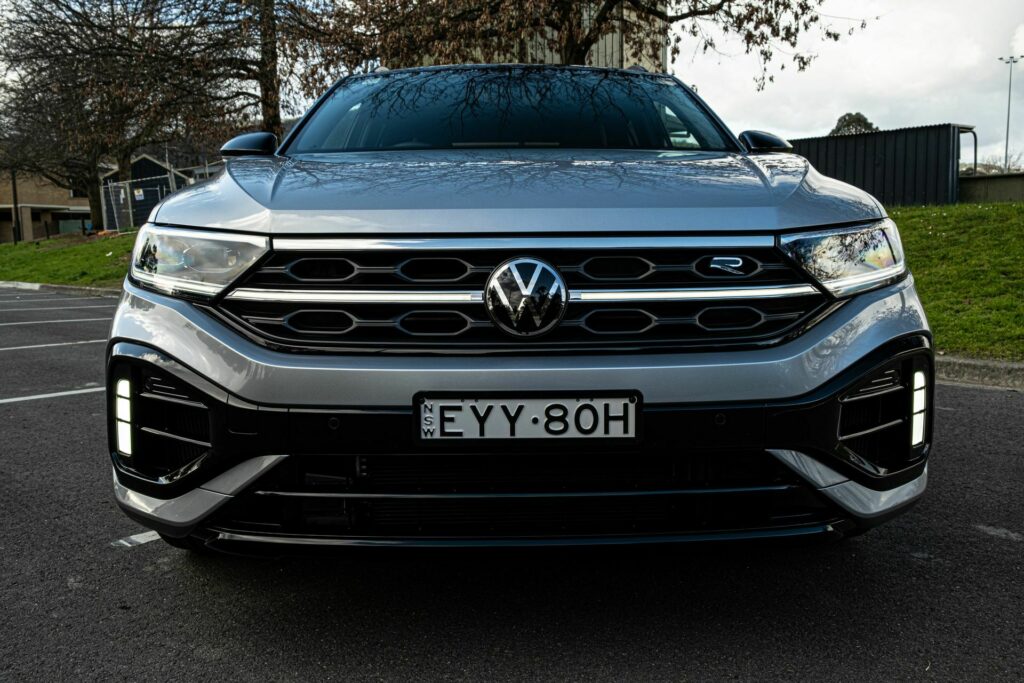
The cheaper price of the T-Roc R compared to the VW Golf R is explained in part by the fact that it is more similar to the Mk 7.5-generation Golf R, not the new one. This is why it lacks the trick R-Performance Torque Vectoring system of its smaller sibling. However, it does still have the VW’s Extended Electronic Differential Lock (XDL) and Adaptive Chassis Control.
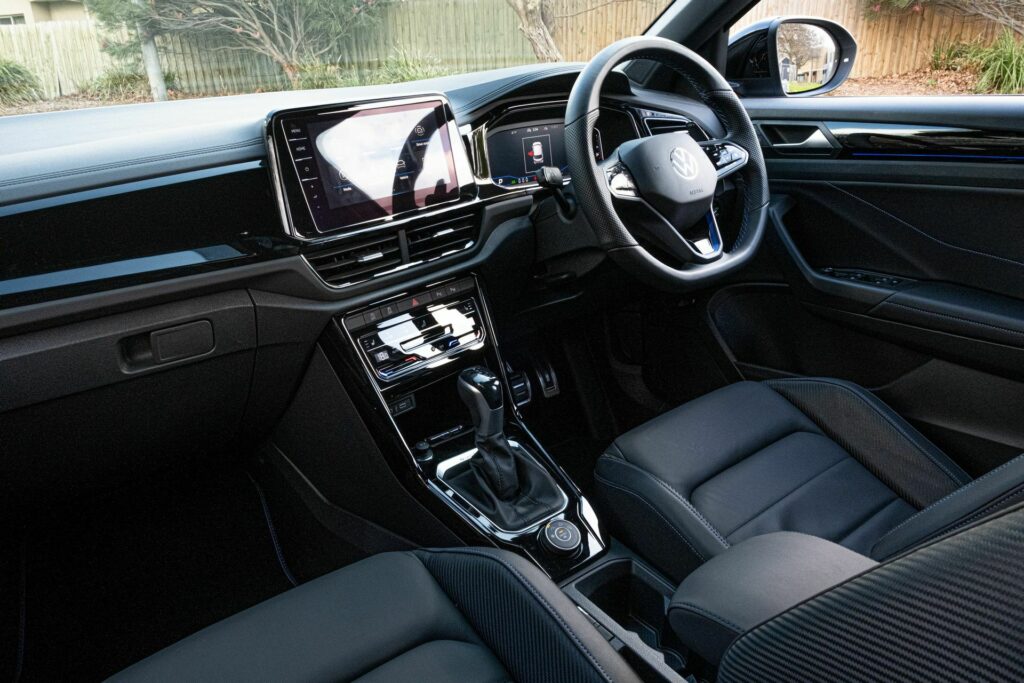
The interior of the T-Roc R is solid. Like some other VW models, there are a few too many hard black plastics on the door panels, dashboard, and transmission tunnel than we would like. Fortunately, the seats of the T-Roc R are wrapped in black leather that is very soft to the touch and the cabin has an altogether sporty yet premium feel to it.
Sitting in the center of the dashboard is a 9.2-inch infotainment display while next to it is a 10.25-inch digital instrument cluster. Both of these screens are high-definition and easy to use and will be familiar to anyone who has driven a VW model over the last 5 years or so. The digital instrument panel is especially good and provides a host of different configurations and layouts.
An aspect of the interior that we didn’t like is the overabundance of capacitive buttons. These start with the climate control switches which are used to adjust the temperature. Similar buttons are also found on the steering wheel and they aren’t particularly intuitive to use. It’s actually quite easy to accidentally knock them with your thumbs while driving. Not ideal, then.
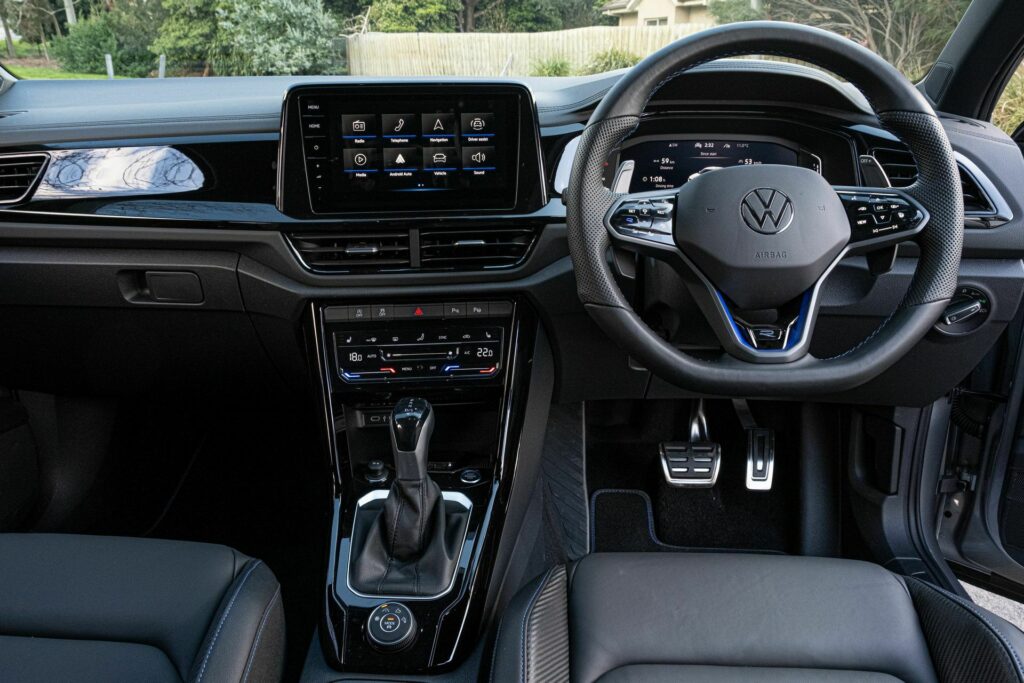
Both wireless Android Auto and Apple CarPlay come standard on the T-Roc R and there is also a wireless smartphone charging pad. The large paddle shifters are a welcome addition and have a solid feel, encouraging you to flip through the gears as often as possible, letting the seven-speed DSG work its magic. When you want to amp things up, the R button on the steering wheel is just a touch away.
Read: Manual VW Golf GTI Could Be Saved, As EU Holds Its Breath For Strict Euro 7 Emissions Decision
On the technology front, the T-Roc R comes outfitted with VW’s IQ.DRIVE driver assistance and safety suite. This system includes Travel Assist which allows for partially automated driving thanks to its use of a camera and radar. This system works alongside the Lane Assist system and the Adaptive Cruise Control to keep the VW centered in its lane. The punchy SUV is also equipped with voice control, digital DAB+ radio, ambient lighting, and heated front seats.
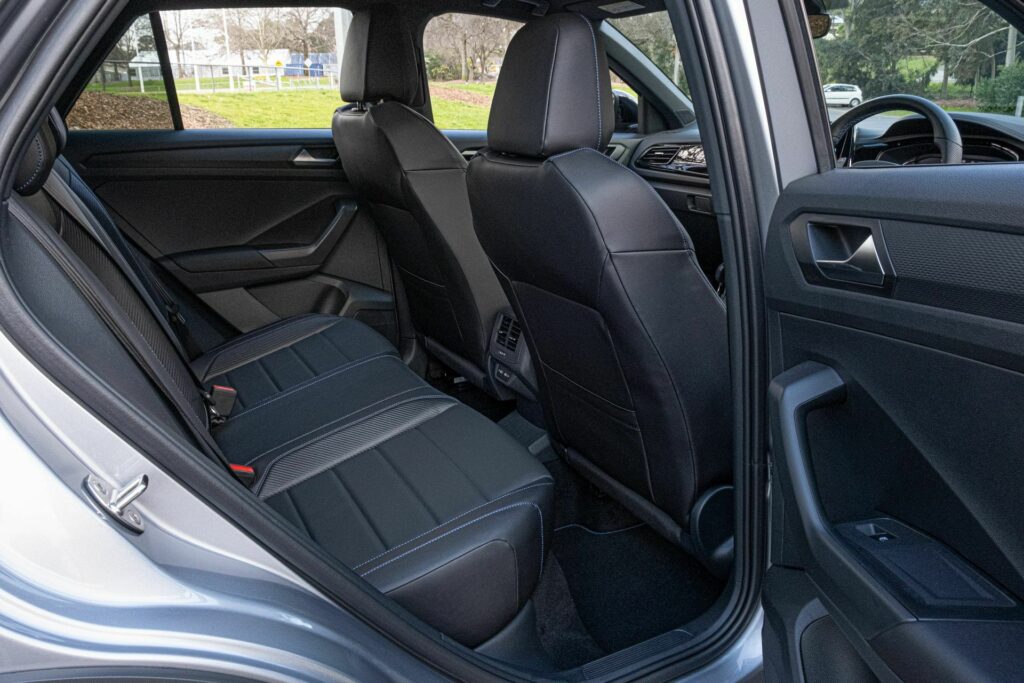
A handful of options are available. These consist of the Black Style Package (AU$1,200 / $770) that adds black wing mirrors, a black roof line strip, black roof rails, contrasting black paint finish, carbon fiber film on the C-pillars, and interior air vents with black surrounds. VW also offers an AU$800 ($513) Beats premium audio system, AU$250 ($160) Lapiz Blue matte accents on the dashboard, center console, and front door trims, and a AU$2,000 ($1,284) panoramic glass sunroof.
An SUV with proper sporty prowess
Driving the VW T-Roc R is much like driving an Mk 7.5 Golf R. Obviously, the driving position of the T-Roc is noticeably higher than it is in the Golf but the engine produces the same satisfying growl on startup. It hums along nicely at idle and the exhaust produces a satisfying burble. When you hit the throttle is when the T-Roc R really comes alive.
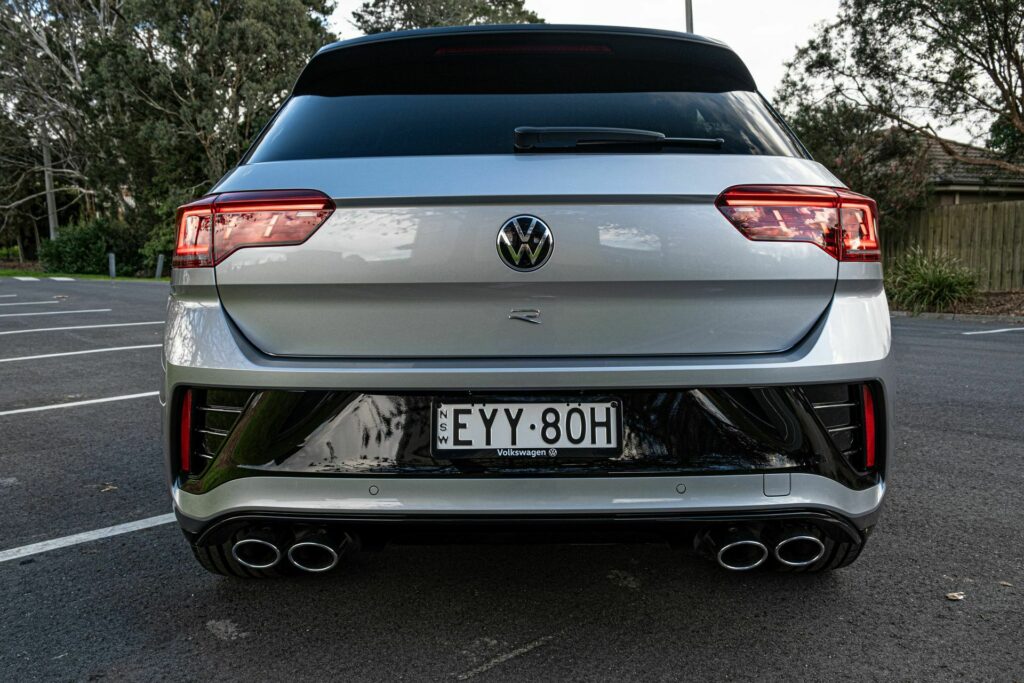
With 221 kW and 400 Nm of torque, it comes as no surprise that the punchy VW SUV feels brisk in a straight line. However, the rolling acceleration isn’t overly impressive and it doesn’t seem as quick or as enthusiastic as the Hyundai Kona N with its 206 kW (276 hp) and 392 Nm (289 lb-ft). This is probably because the torque steer of the Kona N and the more violent shifts of its dual-clutch transmission add to the sense of speed but in reality, we’re sure the T-Roc R is faster. It really shines with launch control enabled.
If you hold the brake and pin the throttle, the T-Roc R’s computers will hold the revs at around 4,000 rpm and sling you off the line with violence, sending your head slamming into the headrest. VW claims it will hit 100 km/h (62 mph) in 4.8 seconds and it feels every bit as quick as that. Not even wet conditions can upset the all-wheel-drive system and the T-Roc R will still rocket off the line with ferocity.
Find yourself some corners and the T-Roc R performs well there, too. In R mode, the steering doesn’t provide all that much feedback and it can sometimes be difficult to determine just how much grip the 235/40 R19 Hankook Ventus S1 Evo2 tires have. However, once the speeds started to build and we learned to trust the front end, we were left enthralled by the levels of grip on offer and the superb handling balance.
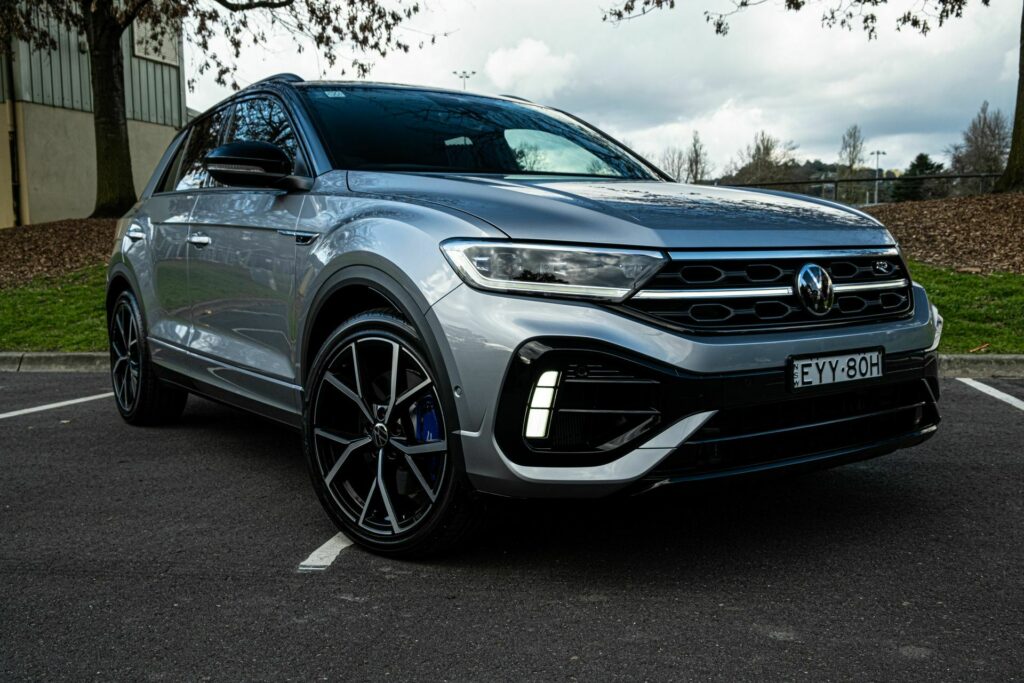
Like the Golf R, the exhaust note of the T-Roc R is intoxicating. No, it doesn’t produce quite the same obnoxious pops and bangs as the Kona N but it emits a lovely burble and farts during upshifts. Australian buyers don’t have the option of an Akrapovic titanium exhaust as they do in overseas markets.
The ride of the T-Roc R is on the firm side. While it does have adaptive dampers and different drive modes to adjust them, the SUV remains quite stiff in even the most comfortable of modes. It’s certainly not harsh but should you be ferrying passengers around frequently it could get a little tiresome. Braking performance is excellent and it retains the same bity feel as we’ve come to expect from other high-performance VW models in recent years. Sadly, we weren’t able to test the car on a circuit to see just how much punishment these brakes can withstand but on the road, they are more than up for the job.
Is this the R to buy?
Ignoring the stiff ride, the T-Roc R suits everyday driving duties with ease. The engine and transmission can be easily tamed in the Comfort, Normal, and Eco drive modes and only come alive in Sport, Race, and Individual modes.
The popularity of crossovers and SUVs continues to soar and the T-Roc R has all the right ingredients to sell well in Australia. Sure, it doesn’t have the desirability of a Golf R or even a Golf GTI but it offers a great balance between performance and practicality. The competitive pricing makes it all the more appealing.



